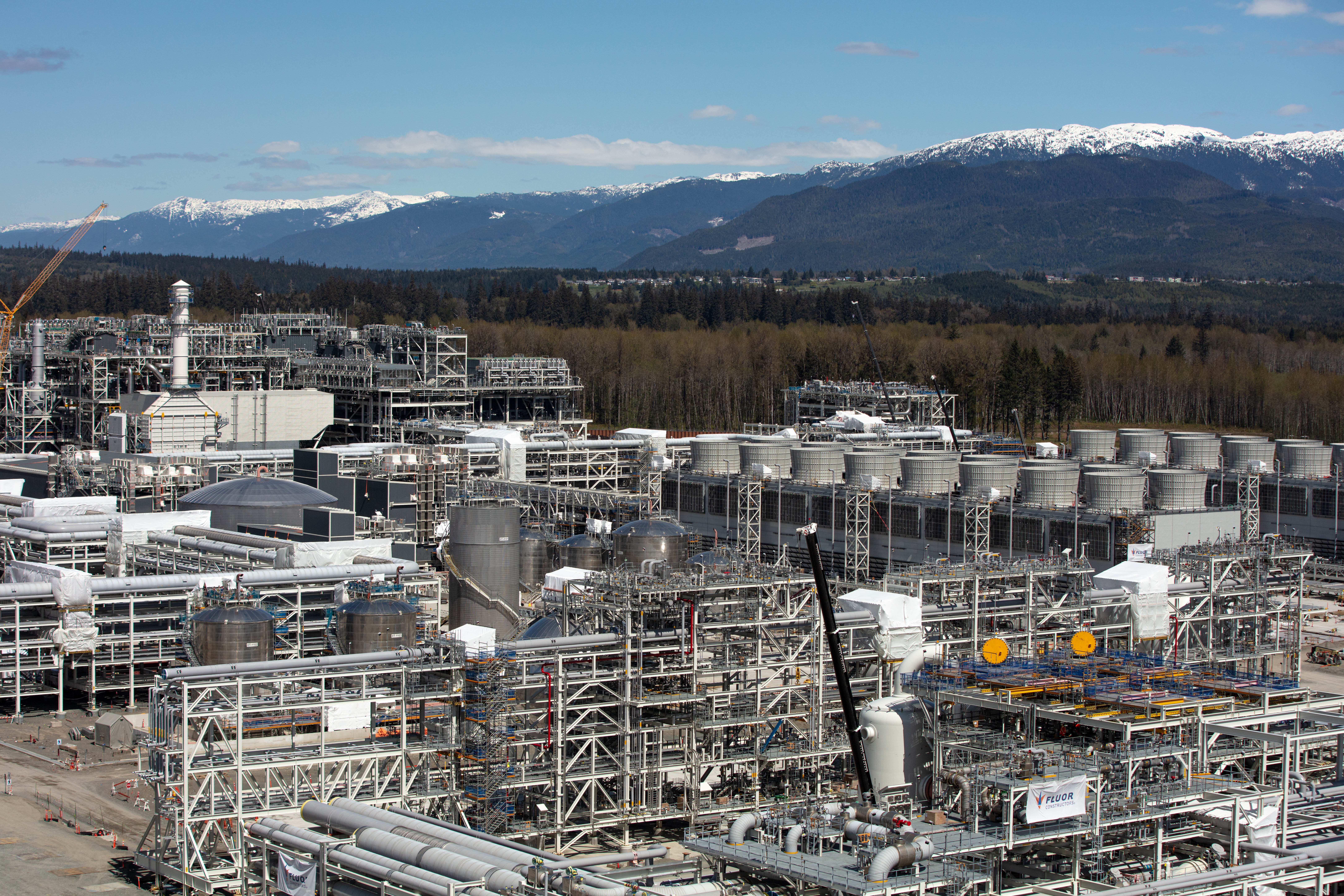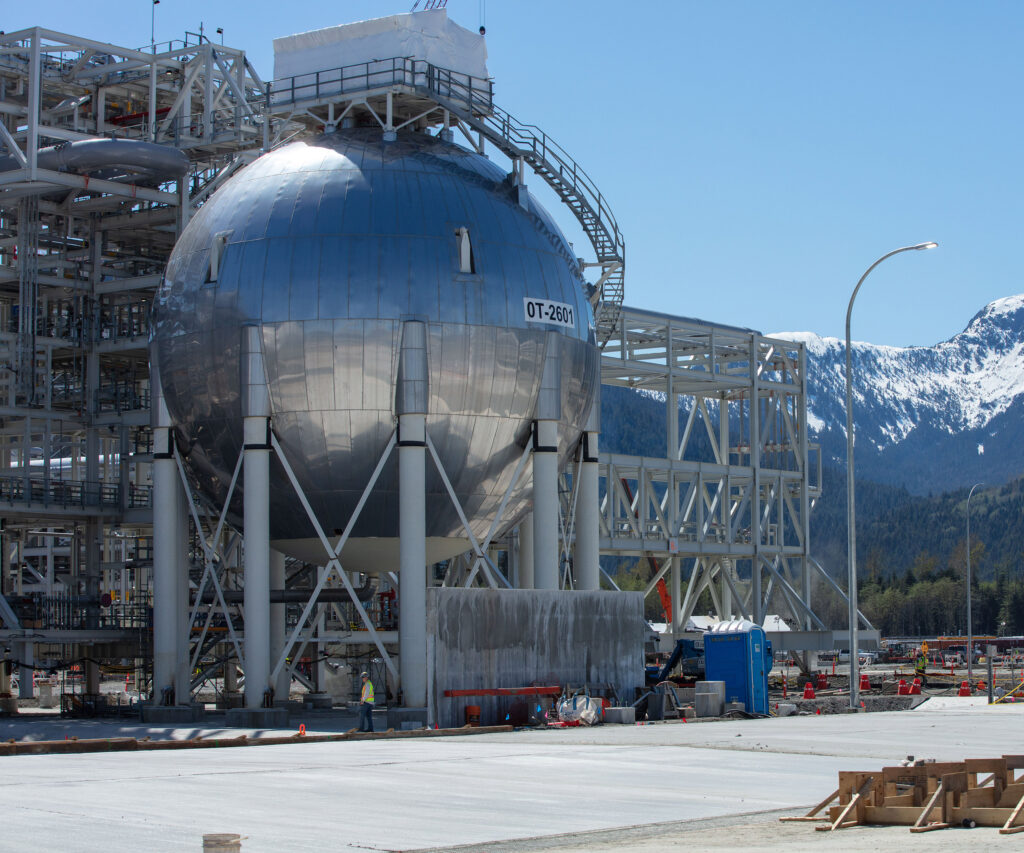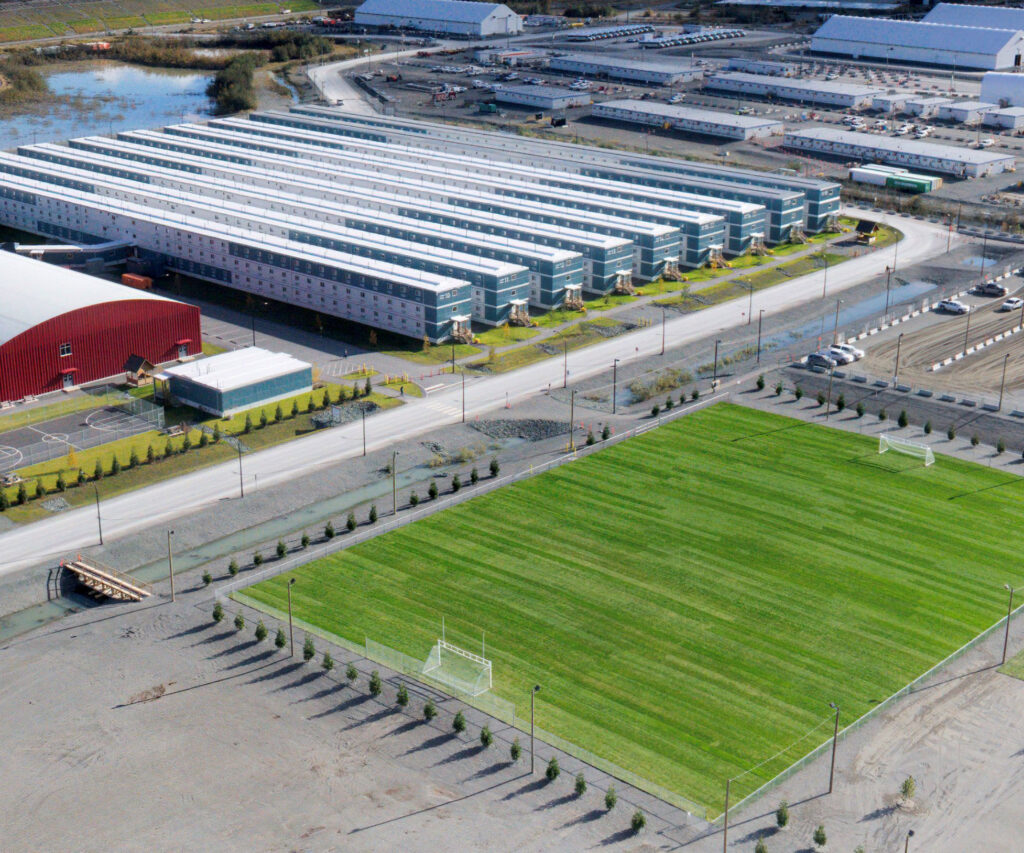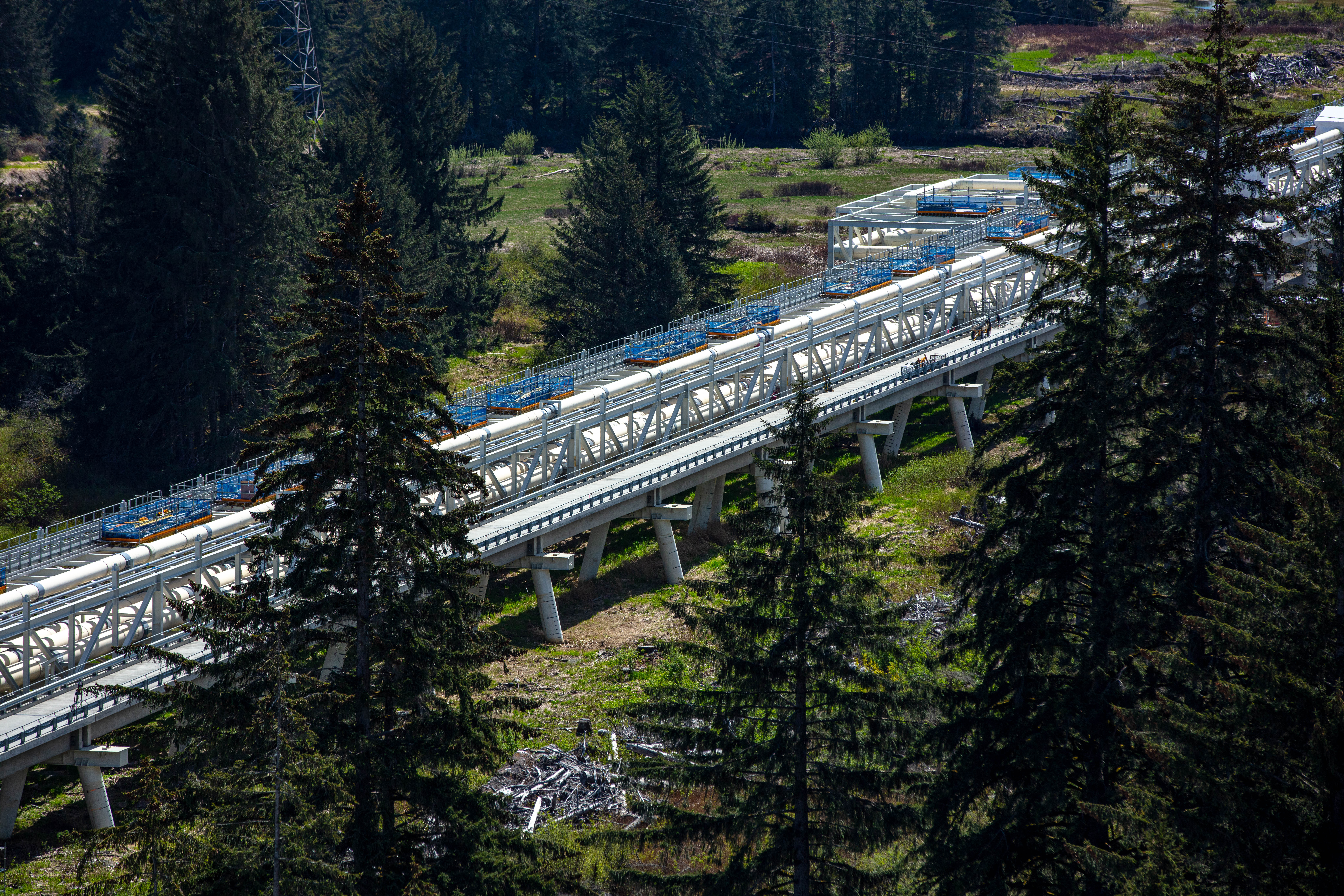
Our Export Facility
We’re building Canada’s first LNG export facility.
What is LNG?
Natural gas is an in-demand energy source known for being clean burning, safe to store and easy to transport.
To export natural gas, it first needs to be turned into liquefied natural gas (LNG), which reduces its volume by 600-fold, making it practical to ship using specially designed marine vessels.
LNG is odourless, colourless, non-toxic, non-corrosive and non-flammable. In order to transport British Columbia’s natural gas safely and efficiently to new markets, the gas is cooled to -162°C, at which temperature it turns into a liquid that can be stored at or around atmospheric pressure. Since LNG does not contain oxygen, it cannot support combustion. If LNG is inadvertently released, it quickly vapourizes, rises and disappears into the atmosphere without leaving residue behind.
About Our Facility
Our one-of-a-kind plant has the option to expand. The key features of our world-leading LNG export facility include:


- LNG Processing Units: Natural gas will enter the processing units, known as trains, where carbon dioxide, water, condensate, sulphur and any other impurities will be separated out. The gas will then be chilled to approximately -162°C and turned into LNG. Condensates will be stored and railed out to market. Our capacity is 7 million tonnes per annum per train.
- Storage Tanks: LNG is piped to a 225,000m3 storage tank until it is loaded onto LNG carriers at the wharf.
- LNG Loading Lines: Two LNG loading lines will transfer LNG from the storage tanks to the wharf and the LNG carrier. They will be insulated to conserve energy and to keep the LNG in its liquid form.
- Marine Terminal: We redesigned an existing wharf to accommodate up to two LNG carriers at a time. Every LNG carrier will be assisted at the terminal by up to three tugboats – tugs will maneuver alongside the LNG carrier, positioning it at a very low speed until the LNG carrier is secured at the berth.
- Rail Yard: The rail yard inside the facility will be connected into an existing rail system, which will be used to load condensate, a petroleum liquid that results from the process of turning natural gas into LNG. The condensate will be temporarily stored in tanks on the site and later transported off-site by rail car for sale to customers.
- Water Treatment Facility: The facility will draw water from the Kitimat River for process cooling, drinking and other purposes. To reduce water loss, a closed-loop system will recycle water for repeated use. During use, most of the water will evaporate. Any remaining water will be treated, along with other facility wastewater, in an on-site wastewater treatment facility, before releasing it into Kitimat Arm.
- Flare Stacks: The facility will feature two flare stacks – one that is approximately 60 metres tall and is the other approximately 125 metres tall – will act as safety devices, a common feature in all LNG facilities. During normal operations, residents can expect to see a small, clean-burning flame at the top of the stacks, similar to a pilot light. This pilot light will be approximately three feet in height and will likely not be visible during the day.
- Workforce Accommodation: To limit the impact of a large influx of people on the Kitimat community, LNG Canada built Cedar Valley Lodge – a workforce accommodation centre adjacent to the work site, which can house up to 4,500 people in single room accommodation. The lodge was designed with workers in mind and provides bus transportation to the worksite, reducing the number of vehicles on the road and other safety concerns.
Interested in seeing what our facility will look like? View our site animation.


